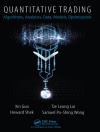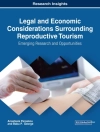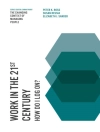Gateway communities that neighbour parks and protected areas are impacted by tourism, while facing unique circumstances related to protected area management. Economic dependency remains a serious challenge for these communities, especially in a climate of neoliberalism, top-down policy environments, and park closures related to environmental degradation or government budgets.
The collection of works in this edited book provide bottom-up, informed, and nuanced approaches to tourism management using local experiences from gateway communities and protected areas management emerging from a decade of guidelines, rulemaking, and exclusive decision-making.
Global perspectives are presented and contextualized at the local level of gateway communities in an attempt to balance nature, community, and commerce, while supporting the triple bottom line of sustainable tourism.
While anticipating a post-COVID 19 global shift, readers are encouraged to think through transformation and resiliency in regard to how the flux of supply vs demand alters gateway community perspectives on tourism.
Specific features of this book include:
· Focus on transformations, which provides insight into the complex and dynamic nature of gateway communities.
· Multidisciplinary, multi-cultural insights into protected area management.
· Applied and conceptual chapters from global perspectives.
लेखक के बारे में
Rob is Professor Emeritus at Westfield State University. As a geographer, he has been involved with the planning and management of parks and protected areas throughout his academic and personal career. He has taught undergraduate and graduate courses in travel and tourism, quantitative methods, GIS and site planning. He has published over 70 research papers in peer-reviewed journals, government documents, community plans, and book chapters and has delivered a similar number of presentations at regional, national and international conferences. For parks and protected lands he has expertise in volunteer management, cultural landscape monitoring and hiking. Applying the remote sensing tools of Li DAR has been used to identify and manage our cultural resources in parks. When not outside his research agenda has focussed on the liminality of fright tourism.












